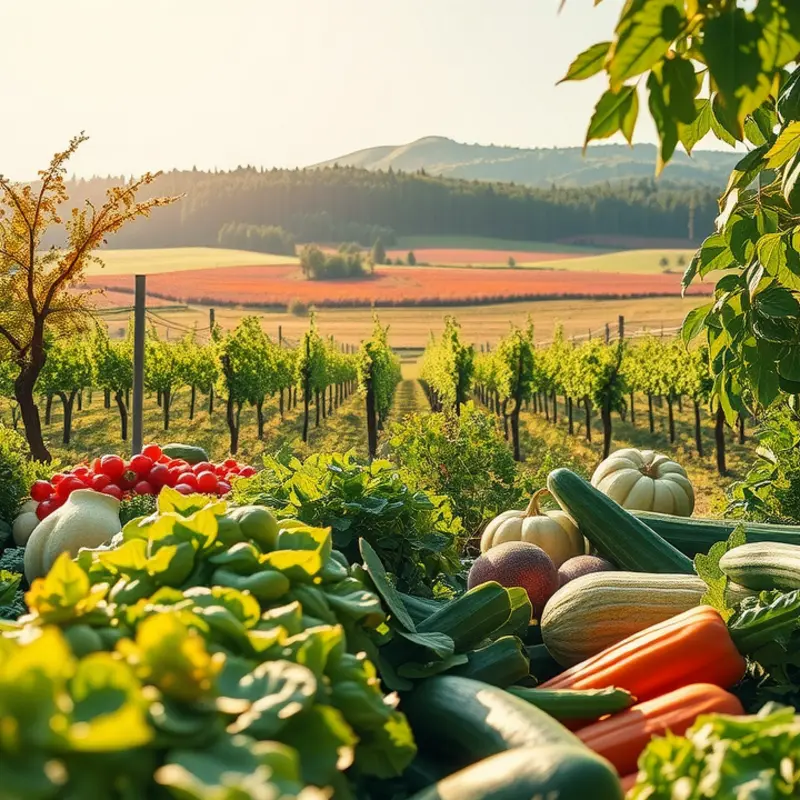Traveling doesn’t have to mean compromising on your eco-values, especially when it comes to food. By choosing sustainable eating practices while on the go, you can enjoy delicious meals and help the planet. From sourcing local ingredients to supporting ethical restaurants, there are plenty of ways to indulge your taste buds responsibly. This guide will inspire you to make thoughtful food choices, ensuring your travels are both enriching and environmentally friendly.
Nourishing the Earth: Sourcing Local and Seasonal Ingredients

Exploring the vast tapestry of culinary traditions across the globe is one of the true joys of travel. Embracing local and seasonal foods offers a gateway to understanding a region’s culture, environment, and community. Eating locally sourced produce not only provides fresher and more nutritious options but also significantly reduces the carbon footprint tied to food transportation.
To fully engage with local flavors, begin by discovering the heart of a region’s gastronomic scene through its markets. Farmers’ markets are invaluable, offering a direct peek into the local foodscape. They often pop up weekly in town squares or community centers and feature everything from fresh vegetables to artisanal cheeses.
While navigating a new city, asking locals for market recommendations can lead to hidden gems. Libraries, tourism offices, and online community boards are also excellent resources for locating these vibrant hubs. Organic eateries can be found through websites dedicated to eco-friendly dining, or by asking around for establishments that boast farm-to-table menus.
Supporting small-scale farmers ensures your money contributes directly to local economies, fostering a resilient agricultural community. Small farms tend to embrace diverse crops, encouraging biodiversity and healthier ecosystems. These farmers’ practices often emphasize sustainability, such as crop rotation and reduced pesticide use, which means your meal helps sustain the earth it comes from.
Choosing seasonal ingredients enhances your travel experience by aligning your meals with the natural harvest rhythm of the locale. Seasonal eating is a dance with nature, offering unrivaled taste and freshness. This practice reduces demand for out-of-season produce, thus decreasing the need for environmentally taxing imports.
To immerse yourself more deeply, opt for dishes that echo the agricultural heritage of the area. Local specialties often mirror the historical harvesting cycles and cultural preferences of the region. By choosing these dishes, you gain a richer understanding of the tradition and care poured into the land and its produce.
Your journey to savor sustainability extends beyond meals themselves. To further minimize waste and bolster eco-consciousness, consider smart storage techniques to keep leftovers fresh. For helpful tips, visit our guide on eco-smart kitchen storage.
In summary, eating local and seasonal foods enriches your travels, supports local economies, and nurtures the environment. By engaging with the vibrant tapestry of local markets, supporting small-scale farmers, and savoring the season’s bounty, you responsibly relish the flavors of the earth.
Dining Responsibly: Choosing Sustainable Restaurants

Choosing where to dine while traveling can shape your impact on the environment. Opting for restaurants that prioritize sustainability contributes significantly to eco-friendly travel. Understanding how to identify these establishments is key to dining responsibly.
To start, look for restaurants with certifications like LEED or Green Restaurant Association approval. Such certifications reflect a commitment to sustainable operational practices, including energy efficiency and waste management. Additionally, explore restaurants offering seasonal menus, as these typically source ingredients locally. Not only does this reduce the carbon footprint associated with transporting food, but it also supports local farmers and communities.
Waste reduction plays a crucial role in a restaurant’s sustainability. Diners can inquire if the restaurant employs strategies such as composting, recycling programs, and sourcing food with minimal packaging. Some restaurants even practice “nose-to-tail” and “root-to-stem” cooking, ensuring that every part of the ingredient is utilized, which minimizes food waste.
Plant-based choices are another important aspect. Integrating more plant-based meals into your diet can drastically reduce your carbon footprint. Opting for dishes centered around grains, legumes, fruits, and vegetables lessens reliance on resource-intensive animal agriculture. For instance, choosing a chickpea curry over a beef burger significantly cuts down on greenhouse gas emissions associated with your meal.
Finding sustainable restaurants can be easier with the help of technology. Apps and websites dedicated to guiding diners toward eco-friendly choices are invaluable for travelers. These platforms often provide user reviews, sustainability ratings, and directories of green restaurants worldwide.
Finally, awareness of cooking techniques can also inform your choices. Restaurants employing low-waste cooking methods or creative ingredient batching demonstrate a commitment to sustainability. For travelers interested in these practices at home, exploring resources onlow-waste cooking prep can be enlightening.
Incorporating these tips into your travel plans not only enhances your dining experiences but also ensures that they align with environmental conscience. Bon appétit, and happy sustainable travels!
Final words
Traveling sustainably through mindful eating choices enhances your adventure while preserving the planet for future generations. By embracing local and seasonal ingredients, you not only support local economies but also reduce your carbon footprint. Opting for restaurants that prioritize sustainable practices allows you to enjoy meals that align with your environmental values. Whether you’re exploring hidden markets or discovering eco-friendly eateries, remember that every bite can contribute to a healthier planet. Together, let’s make responsible food choices that nourish not only our bodies but also our environment, making each journey a step towards a more sustainable future.








